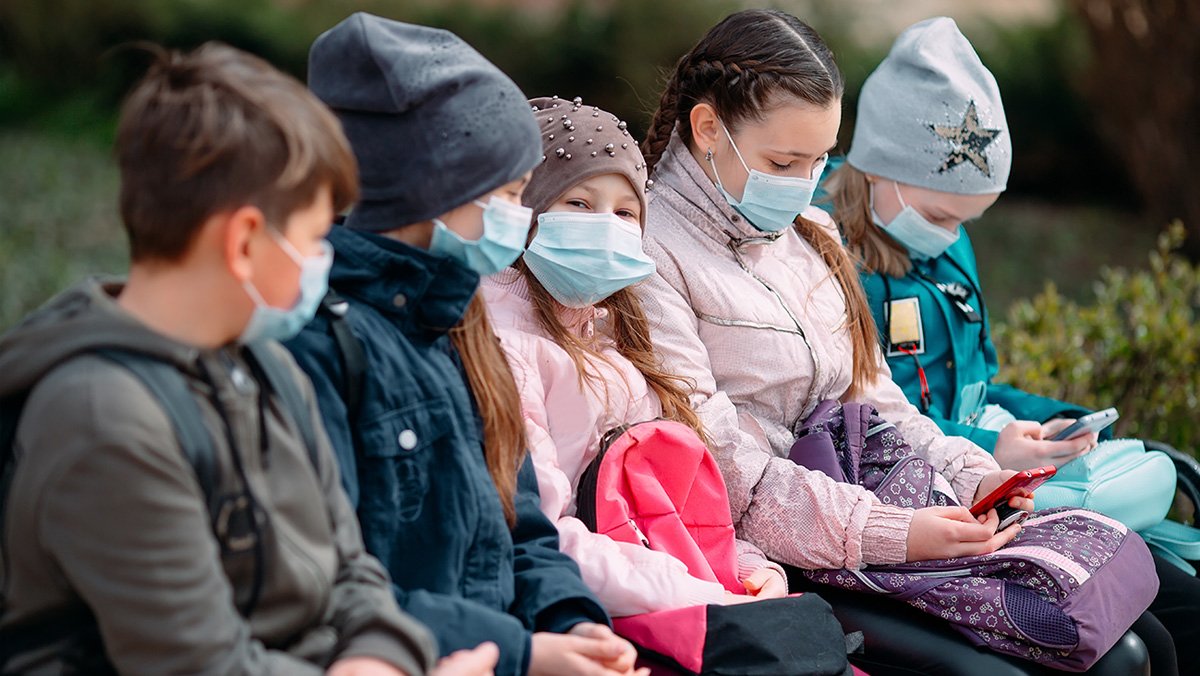
Covid-19 threatened to disrupt the continuation of learning due to school closures thus jeopardizing the achievement of SDG targets 4.1, 4.5, and 4.6.
Soon after the outbreak of COVID-19 pandemic in early 2020, as the global leader in anticipating and responding to emerging trends and needs in education, UNESCO set up an Agile Working Group entrusted with the monitoring school closures. Later, this mandate has been expanded to include tracking the evolution, scale, policy responses and impacts of the COVID-19 caused closures of educational institutions worldwide. Data gathering and validation process is being ensured by triangulating diverse data source, including through the field network of UNESCO, official sources, and information as well as local media in diverse languages.
The following stories concerning the response of the UNECE region is excerpted from UNESCO’s worldwide initiative.
At the peak of the COVID-19 in 2020, schools were forced to shut nationwide in 45 countries and partially in 7 countries, heavily impacting 222 million primary and secondary students, accounting for 98 per cent of total student population in the UNECE region.24 Almost two years later, the figure of impacted students has dropped by more than 70 per cent. In only 5 countries schools remain partially closed, affecting 68 million students.
24 The total number of students in the 56 member countries of UNECE is 227 million. See methodological note on the definition of school closures and global map.
The evolution of number of learners impacted by different school status
Partial closures in the form of shifting all grades or some levels to online learning or hybrid learning in areas with high infection25 or in schools with low percentage of education staff vaccination26 have become popular policy measures. Moreover, delegating the decisions of school closures to local authorities27 and prioritizing certain levels28 to attend in-person learning have been also the trend. In response to the new wave of COVID-19 and the emerging new variants of COVID-19, instead of shutting schools widely, many countries have introduced new regulations, for instance, strengthening health measures at schools (e.g., Netherlands, France, United Kingdom), extending academic breaks (e.g., Hungary, Republic of Moldova, Serbia), or switching to partial closures with dispersal attendance to curb the spread of COVID-19 (e.g., Bulgaria, Romania, Ukraine). This demonstrates diverse efforts and capacities of many governments to ensure schools remain open for learners.
25 In Bulgaria, when there are 750 patients per 100,000 people in the municipality, schools will move to distance learning.
26 In Romania, physical presence was permitted in schools where at least 60 per cent of education staff are vaccinated. In Ukraine, secondary students can attend in-person classes if 80 percent of education staff is vaccinated.
27 Denmark, Germany, Canada, and the United States all decentralized the decision of school re-opening or closures to their local municipalities.
28 In Austria, France, Greece, and the Netherlands, there were times when children at primary level could go to schools and other levels continued online or hybrid learning.

The duration of nationwide school closures in UNECE countries is on average 13 weeks to-date, accounting for only two thirds of the world average. Yet the highest average number of disrupted in-person instruction weeks was seen in Southeast Europe and South Caucasus, with an average of 19 weeks of complete school shutdown and 20 weeks of in-person learning with restrictions, as much as the world average.
The average duration of school closures of UNECE member states and the world
While online platforms were the most popular in the region, launched by all countries, radio-based platforms were the least favoured ones, implemented by only one sixth of the countries. However, provision of remote learning solutions does not necessarily guarantee the effectiveness of learning. According to the joint survey of UNESCO, UNICEF, the World Bank and OECD (June 2021), only one third of UNECE countries30 confirmed that the students followed distance education during school closures.
29 There is no data available for Andorra, Liechtenstein, and Turkmenistan. This dataset primarily comes from the joint survey of UNESCO, UNICEF, the World Bank andOECD in June 2021, complemented by research carried out by UNESCO.
30 44 countries responded the joint survey of UNESCO, UNICEF, the World Bank and OECD in June 2021.
Remaining UNECE countries had either no data at all or reported that between 25 and 50 percent of students had no access to distance learning. Monitoring effectiveness of distance education has become an emerging agenda towards achieving SDG 4 by 2030.
The share of member countries by different remote learning modalities
Learning must continue even during the ongoing crisis. In response to the ongoing school closures and reopening caused by COVID-19, diverse policy measures have been taken to mitigate learning disruption in the UNECE region.